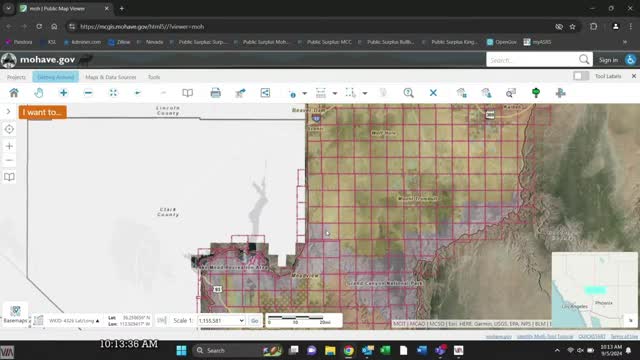Wild burros face removal as population control measures proposed
September 05, 2024 | Mohave County, Arizona
This article was created by AI summarizing key points discussed. AI makes mistakes, so for full details and context, please refer to the video of the full meeting. Please report any errors so we can fix them. Report an error »

In a recent government meeting, officials discussed the growing population of wild burros in the Tassie Gold Butte area, which are considered non-native and have been proliferating unchecked. The environmental assessment presented five potential strategies to manage this issue, including raising the Appropriate Management Level (AML) to allow more burros, implementing fertility control vaccines, reducing livestock grazing, using bait and traps, and relying on natural population control methods.
The recommended action from the assessment is to remove the wild burros using helicopters and traps, a move that officials believe would benefit local livestock grazing by reducing competition for resources and improving rangeland health. The deadline for public comments on this proposal is September 9, and officials encouraged input from the community, noting that they have not identified any major concerns from the county's perspective.
Commissioner Martin emphasized the need for controlled management of the burro population, advocating for scientifically-based methods rather than allowing unchecked growth. He acknowledged that while some may support complete removal, a balanced approach is necessary to mitigate ecological damage while considering the interests of local livestock industries.
Questions arose regarding the actual number of burros in the area, with some commissioners expressing skepticism about their presence. Director Hulte indicated a lack of specific data but suggested that the environmental assessment's initiation implies a recognized issue with burros in the region.
Additionally, the meeting touched on a proposed lease for the Havasu River Marina, which aims to facilitate operations such as gas stores. However, the comment period for this proposal had already closed on September 3, limiting the county's ability to provide input, although they remain adjacent to the project and can still express concerns.
Overall, the discussions highlighted the complexities of wildlife management and land use in Mohave County, with officials seeking to balance ecological health, agricultural interests, and community input.
The recommended action from the assessment is to remove the wild burros using helicopters and traps, a move that officials believe would benefit local livestock grazing by reducing competition for resources and improving rangeland health. The deadline for public comments on this proposal is September 9, and officials encouraged input from the community, noting that they have not identified any major concerns from the county's perspective.
Commissioner Martin emphasized the need for controlled management of the burro population, advocating for scientifically-based methods rather than allowing unchecked growth. He acknowledged that while some may support complete removal, a balanced approach is necessary to mitigate ecological damage while considering the interests of local livestock industries.
Questions arose regarding the actual number of burros in the area, with some commissioners expressing skepticism about their presence. Director Hulte indicated a lack of specific data but suggested that the environmental assessment's initiation implies a recognized issue with burros in the region.
Additionally, the meeting touched on a proposed lease for the Havasu River Marina, which aims to facilitate operations such as gas stores. However, the comment period for this proposal had already closed on September 3, limiting the county's ability to provide input, although they remain adjacent to the project and can still express concerns.
Overall, the discussions highlighted the complexities of wildlife management and land use in Mohave County, with officials seeking to balance ecological health, agricultural interests, and community input.
View full meeting
This article is based on a recent meeting—watch the full video and explore the complete transcript for deeper insights into the discussion.
View full meeting
